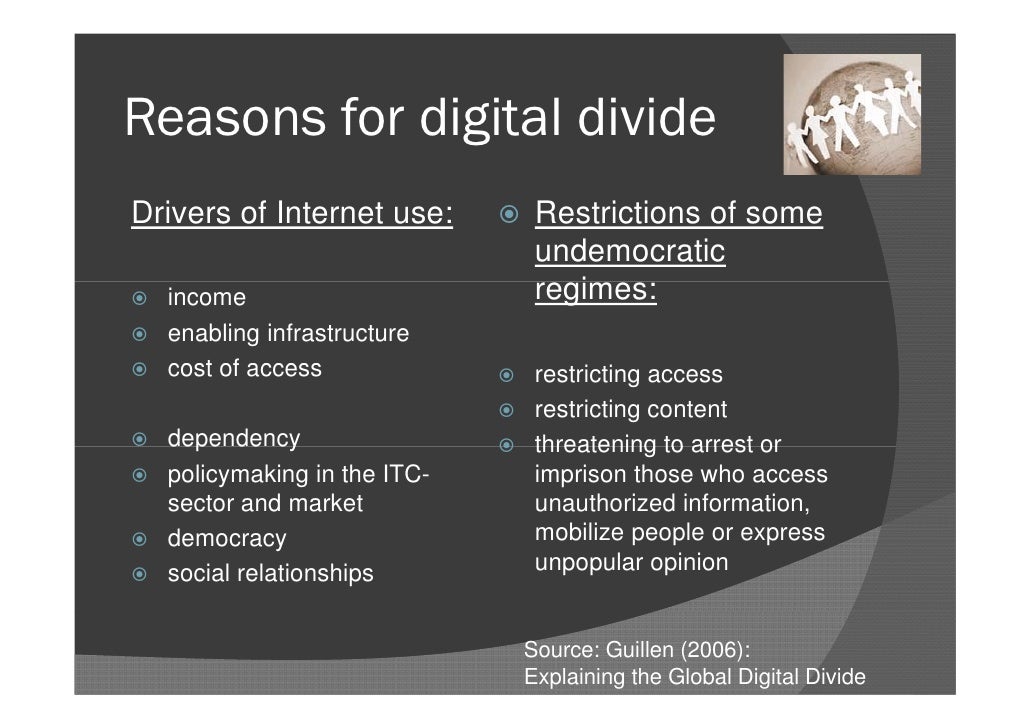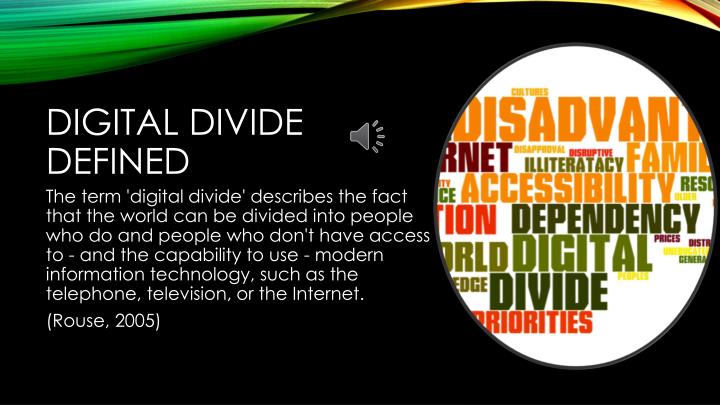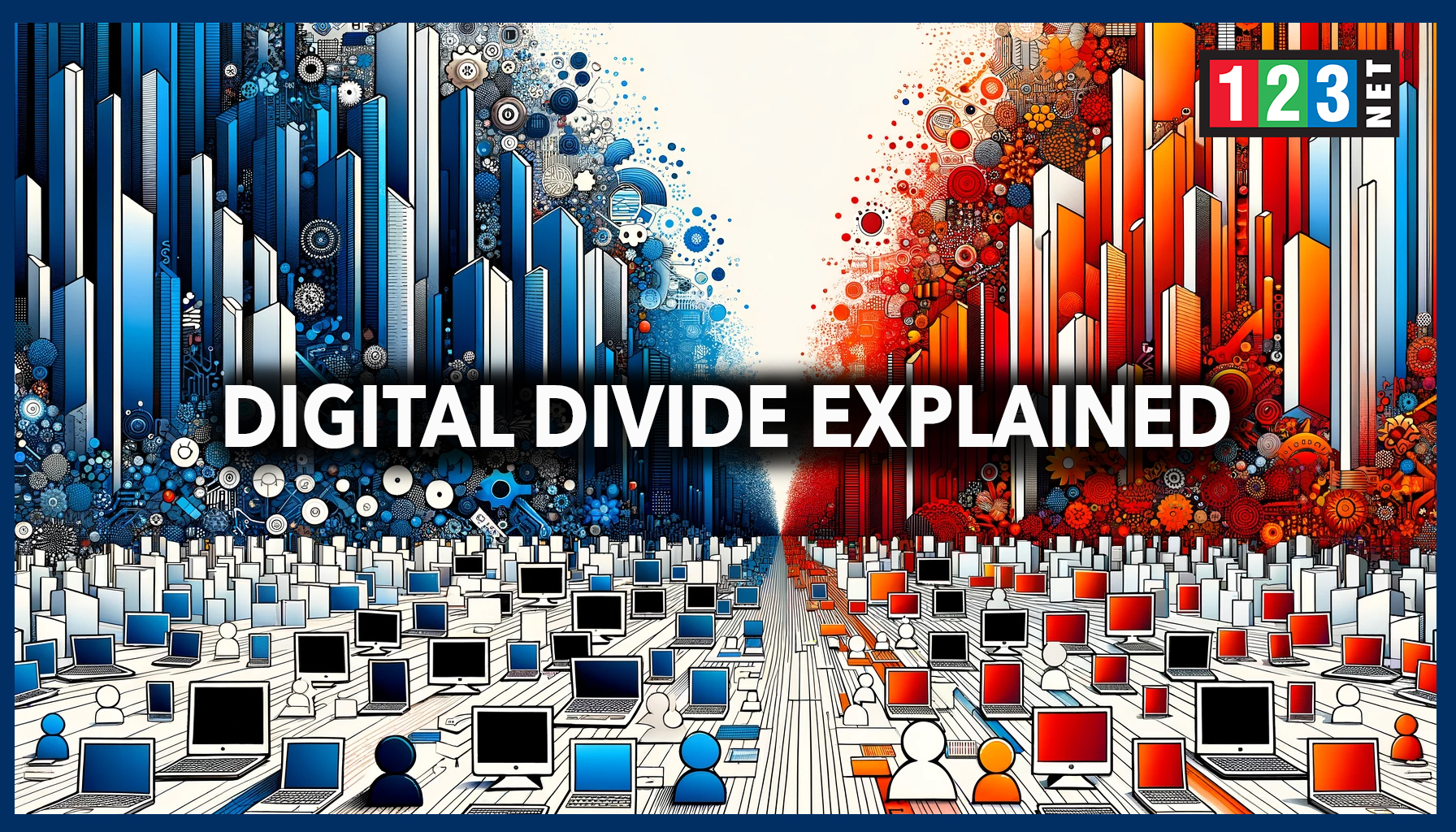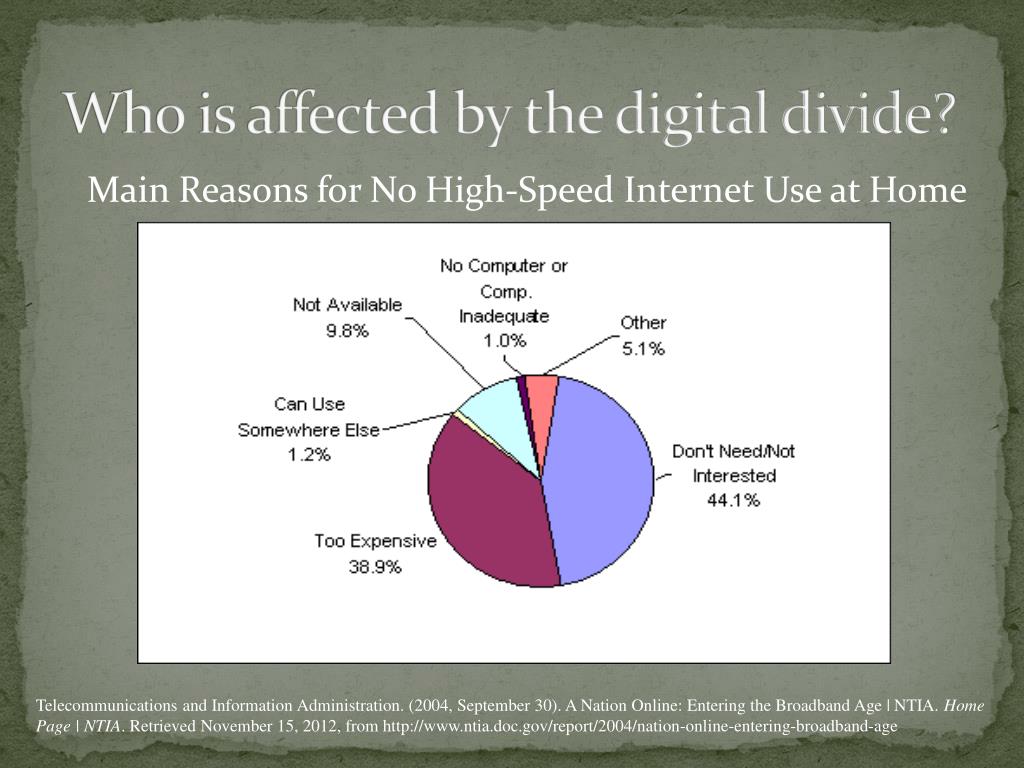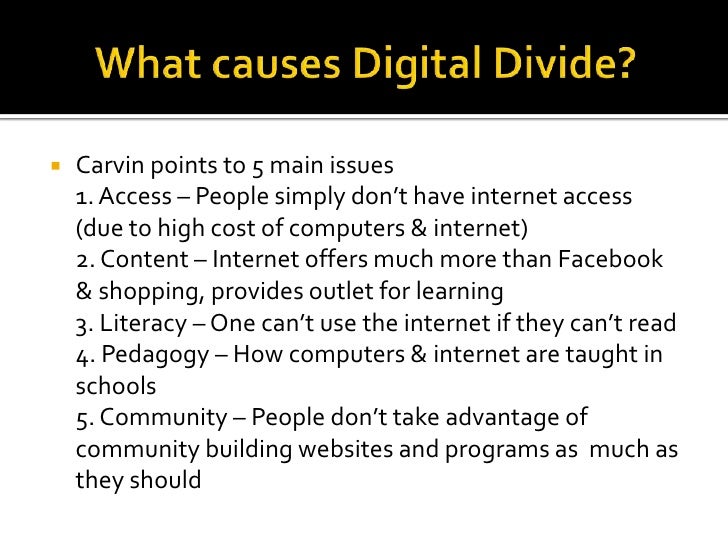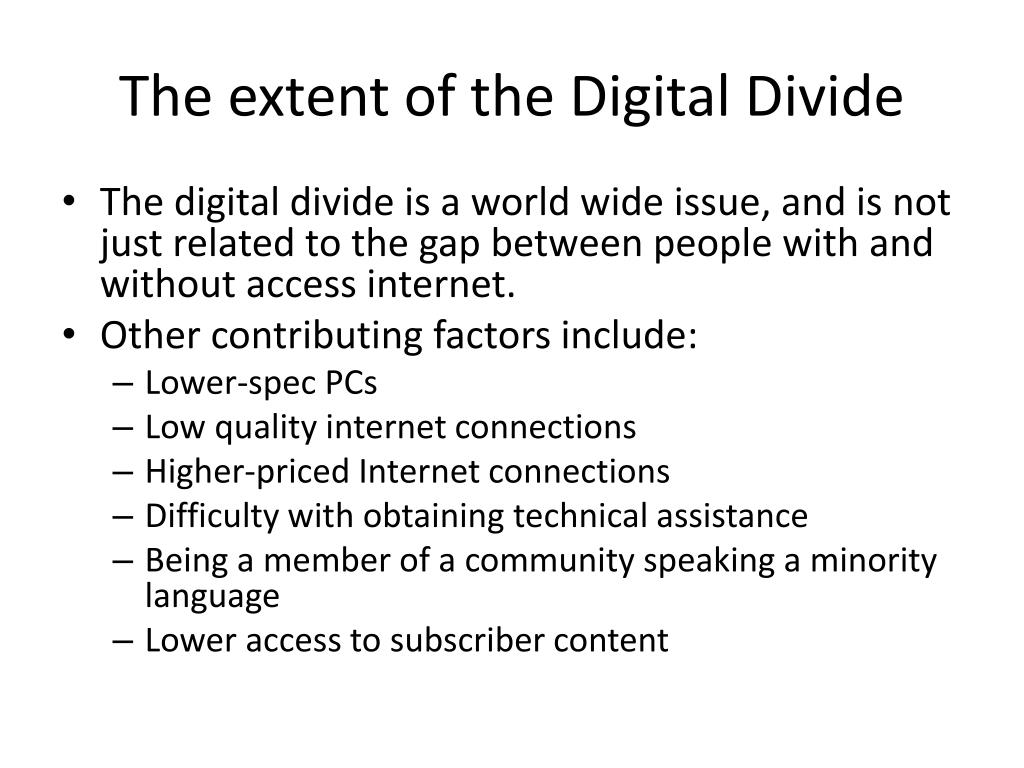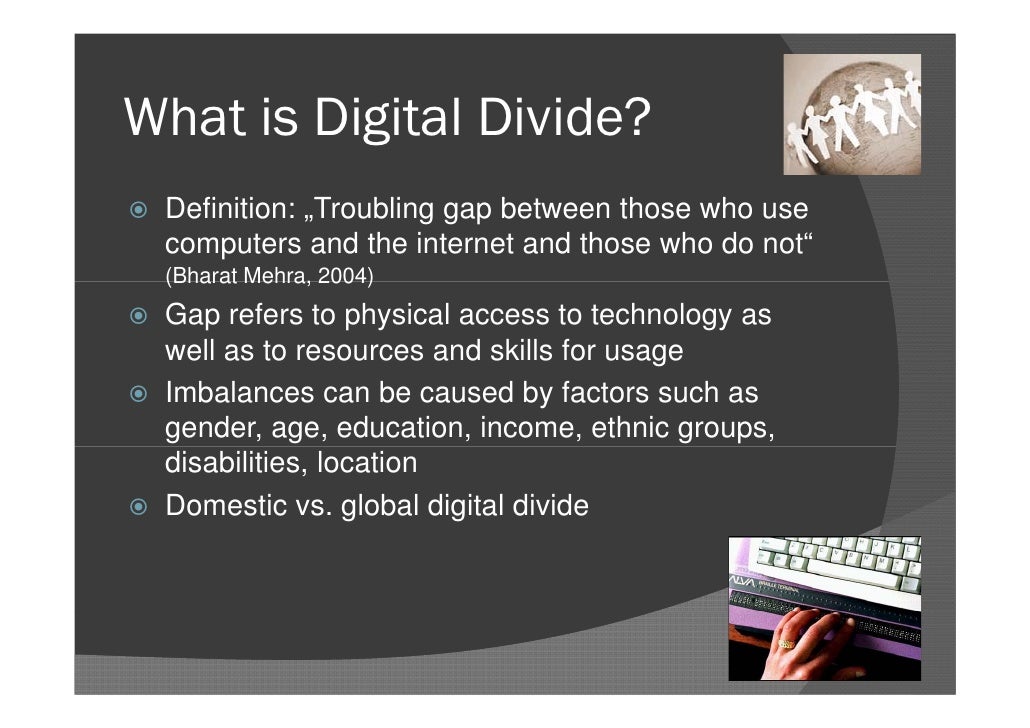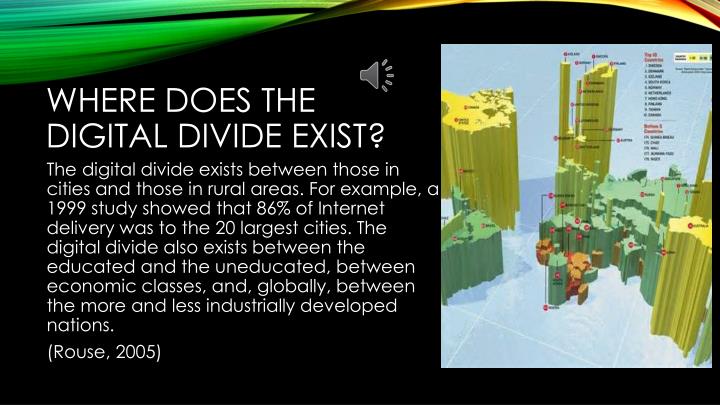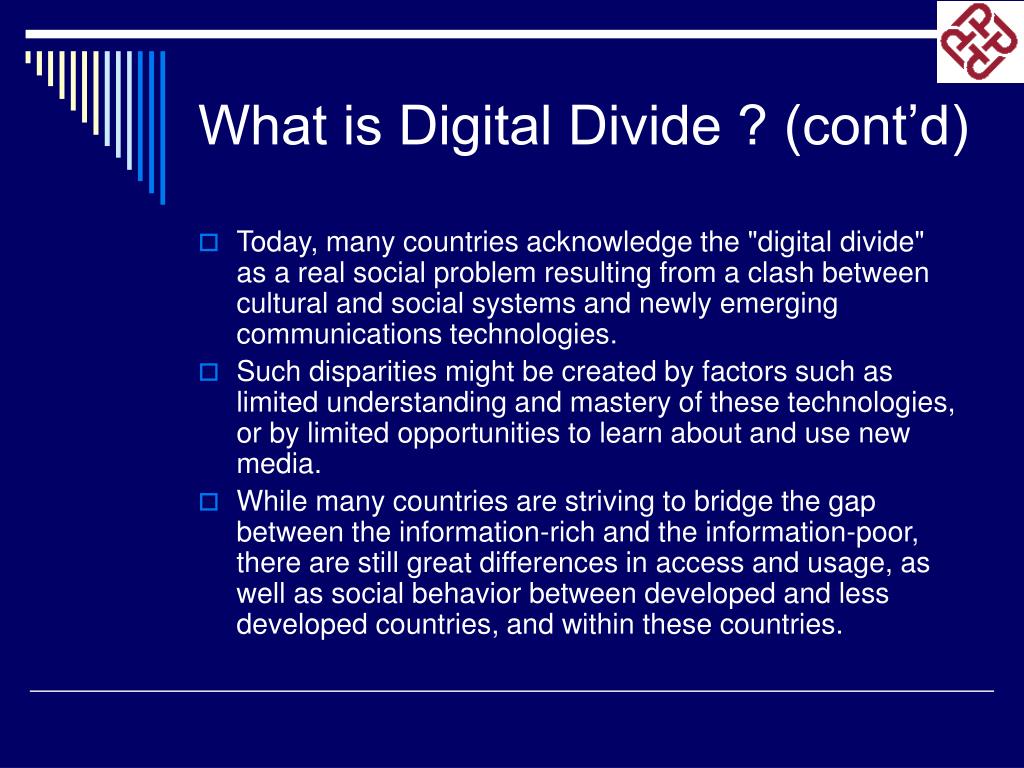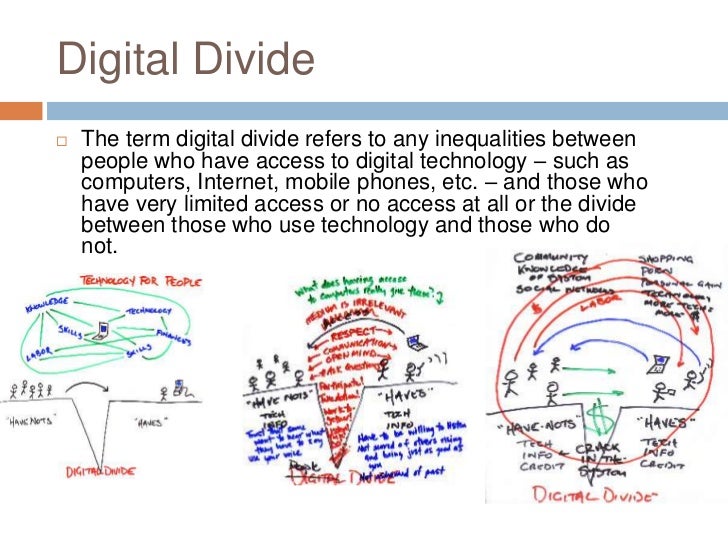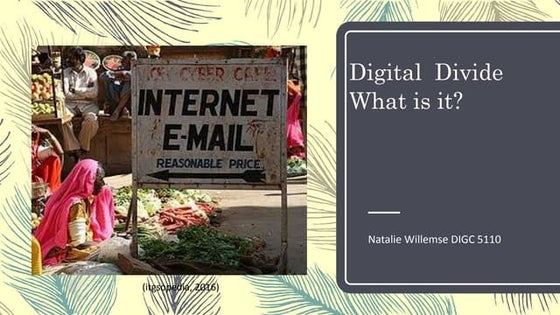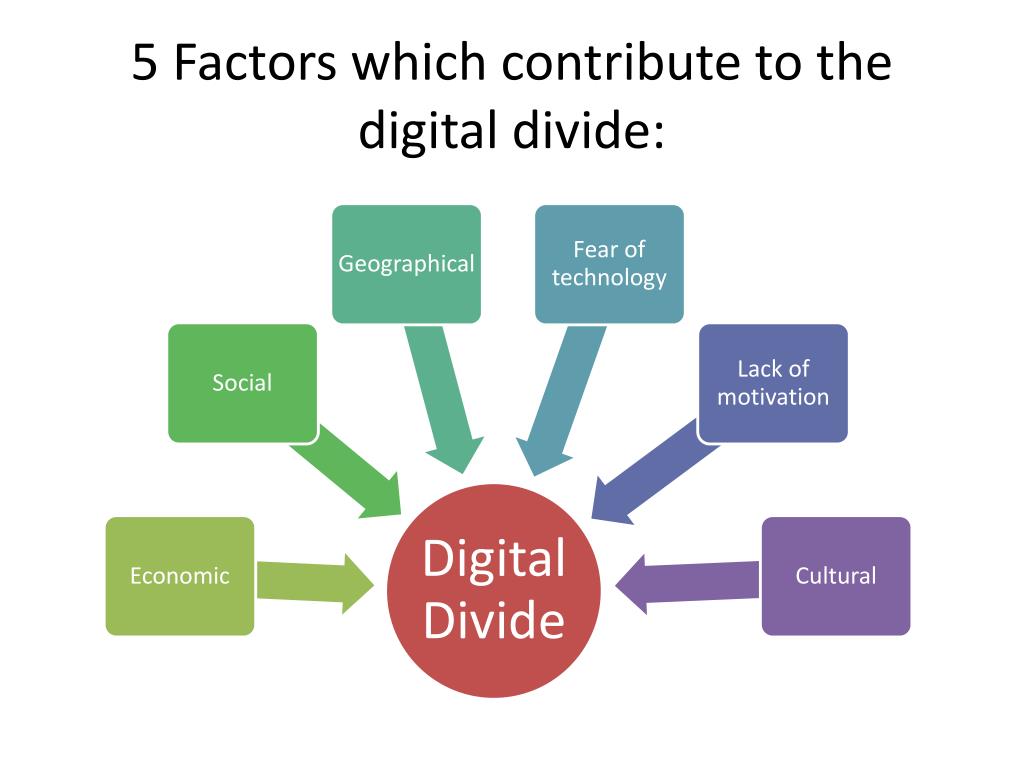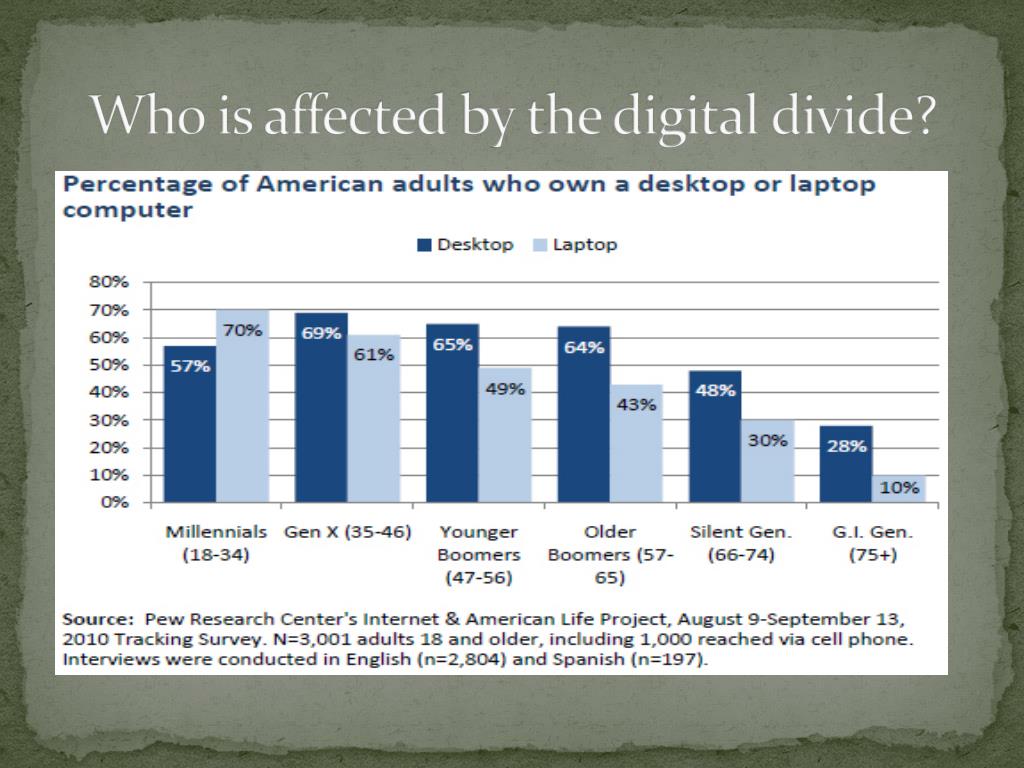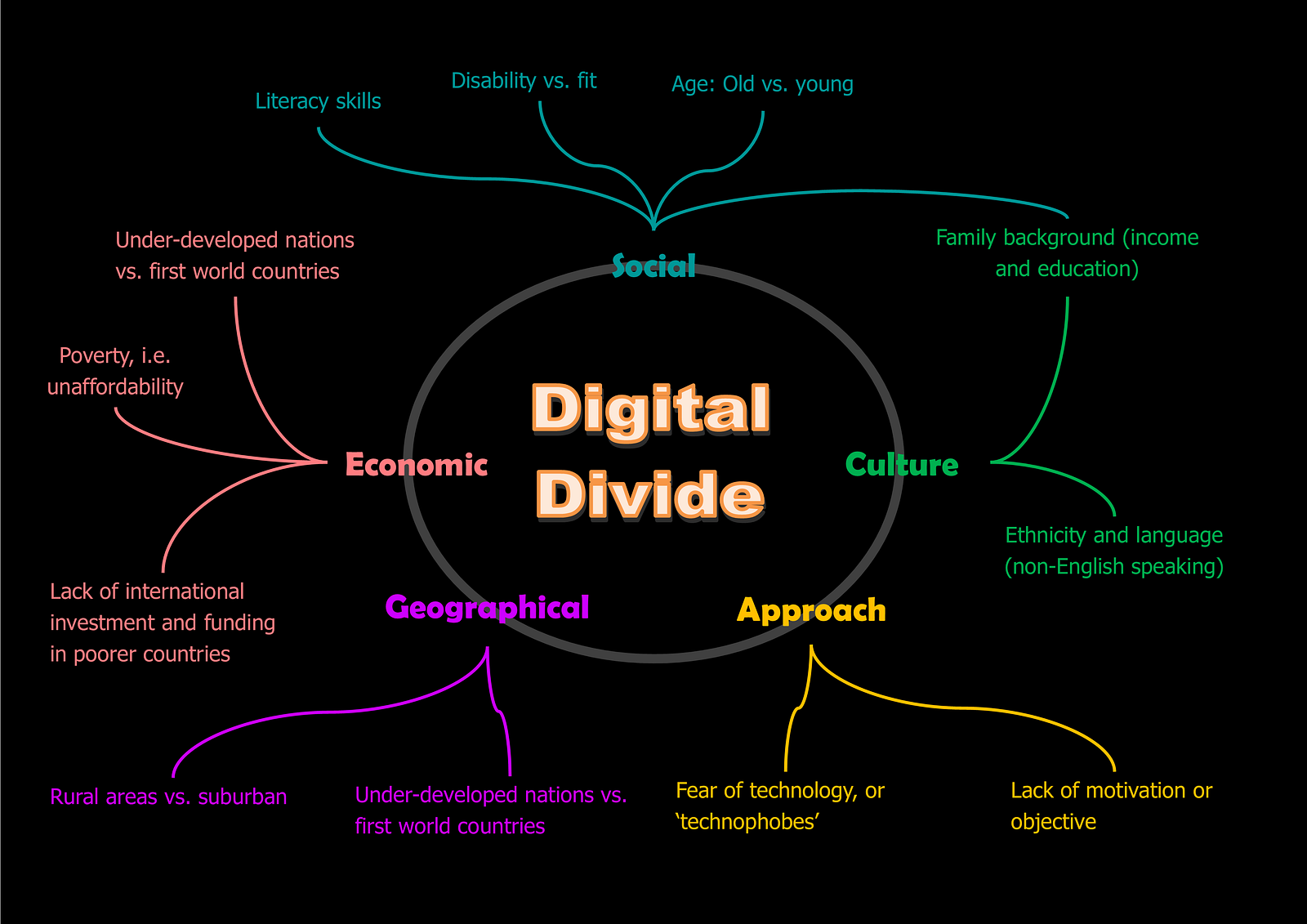Which Statement About The Digital Divide Is True
:max_bytes(150000):strip_icc()/the-digital-divide-5116352-V1-fa4c42a027aa43bda4da16e973097b06.png)
In an era defined by ubiquitous technology, the stark reality of the digital divide continues to cast a long shadow. While some revel in seamless connectivity and boundless access to information, others are left behind, relegated to the margins of the digital landscape. This disparity, more than just an inconvenience, represents a fundamental inequality that impacts education, employment, healthcare, and civic engagement.
The question isn't whether a digital divide exists, but rather, which statement best encapsulates its complex nature and far-reaching implications. Is it primarily about access to technology, affordability, skills, or perhaps a combination of all these factors? Untangling these nuances is crucial for formulating effective strategies to bridge the gap and ensure a more equitable digital future for all.
Defining the Digital Divide: More Than Just Access
The digital divide, at its core, describes the gap between those who have ready access to technology – computers, the internet, and mobile devices – and those who do not. However, limiting the definition to mere access is an oversimplification. The National Telecommunications and Information Administration (NTIA), a bureau within the U.S. Department of Commerce, emphasizes that it encompasses much more than simply having a device or connection.
According to NTIA reports, the digital divide also reflects disparities in affordability, digital literacy, and the availability of relevant content. The statement that most accurately reflects the digital divide is therefore the one acknowledging its multifaceted nature.
Affordability: A Persistent Barrier
Even when infrastructure exists, the cost of internet access and devices can be prohibitive for low-income households. This is particularly true in rural areas where infrastructure development is often slower and more expensive. A 2021 report by the Federal Communications Commission (FCC) highlighted the challenges faced by low-income households in affording broadband services, hindering their participation in online learning, remote work, and accessing essential government services.
Several programs, such as the Affordable Connectivity Program (ACP), have been implemented to alleviate the financial burden. However, the long-term sustainability and effectiveness of these programs remain a subject of debate.
Digital Literacy: Navigating the Digital World
Possessing a device and internet access is only the first step. Individuals must also possess the necessary skills to effectively utilize digital tools. These skills range from basic computer operation and online navigation to critical evaluation of online information and cybersecurity awareness.
Many individuals, particularly older adults and those with limited education, lack the digital literacy skills needed to fully participate in the digital economy. This deficiency can limit their ability to find jobs, access healthcare information, and engage in civic discourse.
Relevance and Content: Tailoring the Digital Experience
The availability of relevant and culturally appropriate content is another critical factor. If the internet primarily offers information in languages or formats that are inaccessible to certain populations, it reinforces the divide. Creating content that addresses the specific needs and interests of diverse communities is essential for fostering digital inclusion.
Initiatives focused on developing multilingual content and culturally relevant educational resources are vital in bridging this gap. These efforts ensure that the internet becomes a valuable resource for all, regardless of their background or language proficiency.
Examining the Data: Quantifying the Divide
Data from organizations like the Pew Research Center provide valuable insights into the extent and nature of the digital divide. Their research consistently reveals significant disparities in internet access and technology adoption across various demographic groups. These disparities are often correlated with factors such as income, education, race, and geographic location.
For example, Pew Research Center data has shown a persistent gap in home broadband adoption between rural and urban areas. This gap underscores the need for targeted investments in rural broadband infrastructure and digital literacy programs.
Moving Forward: Strategies for Bridging the Gap
Addressing the digital divide requires a multi-pronged approach involving government, industry, and community organizations. Investment in infrastructure is paramount, particularly in underserved areas. This includes expanding broadband access and deploying affordable internet options.
Furthermore, funding digital literacy programs that cater to diverse populations is essential. These programs should focus on equipping individuals with the skills they need to navigate the digital world safely and effectively.
Public-private partnerships can also play a crucial role in promoting digital inclusion. By leveraging the resources and expertise of both sectors, it is possible to develop innovative solutions that address the unique challenges faced by different communities.
The Future of the Digital Divide: A Call to Action
The digital divide is not a static phenomenon; it evolves alongside technological advancements. As new technologies emerge, such as artificial intelligence and the metaverse, the gap between the digitally included and excluded could widen further. Therefore, proactive and adaptable strategies are needed to ensure that everyone has the opportunity to participate in the digital future.
Ignoring the digital divide is not an option. Bridging this gap is not just a matter of economic fairness; it is a moral imperative. Only by ensuring equitable access to technology and digital literacy can we create a truly inclusive society where everyone has the opportunity to thrive.
The most accurate statement about the digital divide is the one recognizing its multifaceted nature: a complex interplay of access, affordability, skills, and relevant content. Addressing this complexity is critical for ensuring a more equitable and prosperous future for all.
